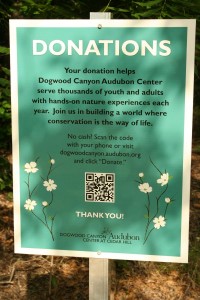Nature Centers in the 21st Century
“The nature center is a new idea,” wrote Byron Ashbaugh in his National Audubon Society bulletin Planning a Nature Center. The year was 1963. The Audubon Center in Greenwich (CT) had opened in 1942—it’s the oldest nature center I can find. (Anybody know of an older one?) Other centers I think of as having long histories were mostly just getting started: Aullwood Audubon Center in Dayton, Ohio (1957); the Hudson Highlands Nature Museum in Cornwall, New York (1959); Kalamazoo (MI) Nature Center (1960); New Canaan (CT) Nature Center (also 1960).
So what spawned this “new idea?” Ashbaugh described a rationale for nature centers that is much the same as one we use today. “Only a generation ago most Americans grew up with part of their lives spent in the country. . . . Today, for millions of Americans, the world of nature is there no longer.” His vision was straightforward:
The basic purpose of a nature center is to provide a green island for every community where there is open space still available. . . . [It is] an institutional device that brings land and people together on intimate terms, where young people, as well as old, under the inspiration and guidance of trained teacher-naturalists, are taught to comprehend the natural world about them, where they can develop the kind of personal conscience they need in order to live as better citizens.
Nature centers have spread since Ashbaugh’s time (helped in large measure by his work and the work of his colleagues in Audubon’s now-defunct Nature Centers Division). There are perhaps 1,500 of them today in the U.S., depending on how you choose to count them, along with another 80-100 in Canada and dozens more in Europe, Australia, and elsewhere.
They do the same kind of work as Ashbaugh’s centers, but they do it in a new world. Ashbaugh knew that the future held change: “The next half-century will see this nation in an age of space exploration and scientific progress undreamed of in the history of mankind,” he wrote. But he probably didn’t envision Twitter.
The challenge for nature centers is that, while their purpose remains vital, their methods have to adapt to the times. Changing demographics, the power of online media, the disinvestment of government in social services, revised understandings of how people are motivated to change behaviors—all these things have an impact on nature centers’ ability to achieve their goals.
It is to help centers adapt to the 21st century that I have started this consulting firm. I certainly don’t have all the answers, but I hope I can help convene discussions that lead to genuinely adaptive change in the centers with which I work. If you’d like to join in, please sign up for our newsletter on this page. We’ll get started!

